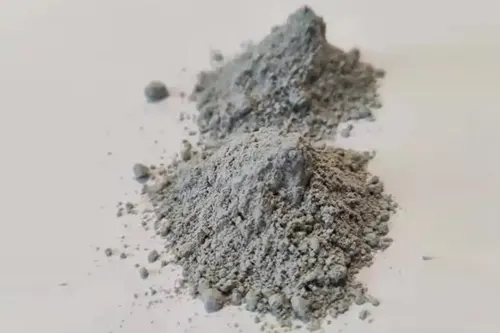Chemical Properties of Silica Fume
silica fume is a byproduct generated during the manufacturing process of silicon alloys and ferro silicon, involving high-purity quartz, coke, and wood chips’ reduction. It consists of fine spherical particles with a high content of amorphous silicon dioxide collected from electric arc furnace flue gas. Silica powder generally contains over 90% SiO2, mainly in the form of amorphous silicon dioxide, and its composition varies depending on the type of alloy.

The primary chemical component of silica fume is amorphous silicon dioxide (SiO2), usually accounting for more than 90% (the minimum SiO2 content requirement for silica fume used in high-performance concrete is 85%). The high fineness of amorphous SiO2 grants it high pozzolanic activity. Under the alkaline activation of calcium hydroxide (Ca(OH)2), a product of cement hydration, SiO2 can rapidly react with Ca(OH)2 to form hydrated calcium silicate gel (C-S-H), enhancing concrete strength and improving its properties.
Silica fume can serve as an auxiliary cementitious material to improve the microstructure of hardened cement paste primarily due to its high pozzolanic activity. Although silica fume itself does not undergo hydration with water, it can participate in a primary hydration reaction when activated by the hydration products Ca(OH)2 and other compounds, generating a cementitious product. Furthermore, its micro-aggregate property allows it to fill harmful pores in hardened cement paste, while its secondary hydration products can also occupy these detrimental voids, hence improving the microstructure of hardened cement paste.


